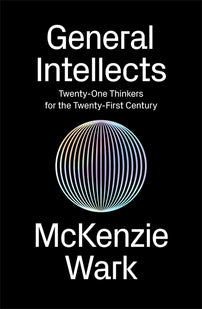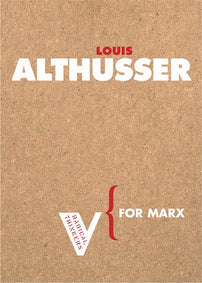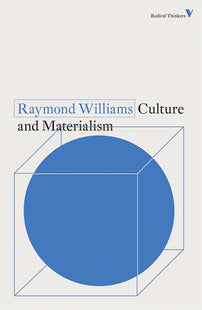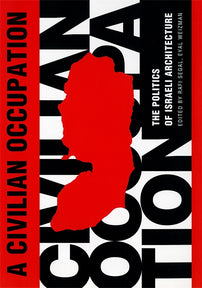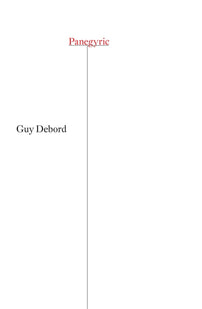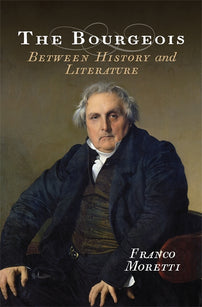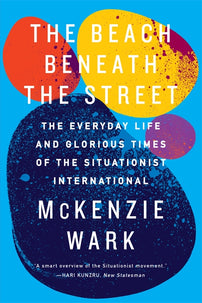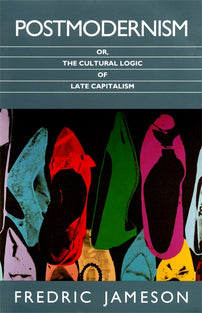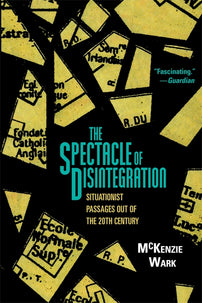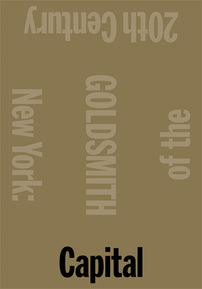Our Aesthetics
In General Intellects I only touched on aesthetic questions. This essay extends my treatment there of Hiroki Azuma and Angela McRobbie, with a look at an influential book by Sianne Ngai.

There are two problems I commonly encounter trying to teach aesthetic theory. One is that students don’t seem to relate to categories of aesthetic experience and judgment such as the sublime and the beautiful. Another is that in today’s cosmopolitan classroom, these seem like rather western categories. A book that might help here is Sianne Ngai’s Our Aesthetic Categories: Zany, Cute, Interesting (Harvard, 2012). The "our" in the title is a delicious provocation.
The book presents two problems: firstly, it is written from within the upper echelons of literary-critical and theoretical work, as conducted in our top universities, a world to which I do not belong. Can it be made interesting for those of us in the more ordinary teaching situations? Secondly: is it possible to extract from it some concepts that can help with the making of a counter-hegemonic culture in our times? Well perhaps. Let’s find out.
Rather than the sublime and the beautiful, Ngai offers three categories, which one can already see at work on the surface of social media, distributed more or less as “zany blogs, cute tweets and interesting wikis.” (14) I’ll get to characterizing the three categories shortly, but even just as common words, zany, cute and interesting seem intuitively right as keys to what many people want to look at, laugh and sigh over, and share with others. If you want to make a meme, in the general sense of a unit of media that will be shared by others, those three all work. The question is, why?
To cut to the punchline: “The best explanation for why the zany, the interesting, and the cute are our most pervasive and significant categories is that they are about the increasingly intertwined ways in which late capitalist subjects labor, communicate and consume.” (238) They are the material through which we can have perceptions and share judgments that seem most closely related to what we do, say and use in the 21st century.
The way Ngai frames this is as a tension between the relative novelty of these aesthetic categories and something which appears as more of a constant — capitalism. The pressure I want to put on this is to ask whether they are indicative not of "late" capitalism, but "early" something else. But first, let’s flesh out the three categories.
The zany is a performative aesthetic, anxious and excessive. It is hot, even sweaty. It is physical and sometimes libidinal. It is about activities where play becomes a job or work gets too playful. It involves imitation and mimicry, as if trying to copy what someone else does but doing it clumsily. It may be done as a joke but taken seriously, or done seriously and taken as a joke: think Lucille Ball or Hugo Ball. Injury may be possible: think Charlie Chaplin on the assembly line. It borders on camp, or what J. Halberstam calls the queer art of failure, as in Kikki and Herb. But the zany is more likely to convert triumph into failure than failure into triumph. Think the coyote’s endless labor of trying to catch the roadrunner.
The zany performance can be too rigid or too elastic. Either way, there’s instability between doing a job and performing a role, or between cultural and occupational performance, or between play and labor. The zany can be desperate or stressed, but is not Dionysian frenzy, as it is more precarious and forced, like bad porn. Obliged to play, the zany can be sexy but not joyous. It appears to want it too much, and tries too hard. The zany is Rossini’s Barber of Seville singing, "Largo al factotum della città," but is also Elmer Fudd in the Looney Tunes remake.
The stock character of the zanni was originally an itinerant servant, a peasant forced by drought or war into the city. The zagna was the female counterpart. The zanni and zagna are supposed to repair amorous relationships for others. Comedy ensues. Already, they perform something like affective labor. The zanni came to refer to a second mine imitating another very broadly, an anarchic improviser. He was a "substitute for another guy." He mutated into The Cable Guy, linked to post-Fordist labor, and like the zanni, caught in between modes of production, in this case between industrial work and service work. I think the zanni shows up again as Kramer on Seinfeld: just like Jerry, only more exaggerated. All the show’s characters perform versions of what Virno calls virtuoso labor, or what Lazzarato called immaterial labor, or what for McRobbie and others is affective labor.
Ngai also thinks of this as feminized labor, a term Préciado would push back on, in the assumptions it makes about what is feminine. But this is certainly at play in movies like Richard Pryor’s The Toy, in which he dresses as a waitress to get a job. Ngai thinks there are ambiguities for women about skills formerly associated with their special role in social reproduction now being used in the workplace. McRobbie would link this to class mobility, where working class women find creative work as a way to repurpose skills that get them out of factory or routine service work. If there’s a genre that performs this kind of performativity, it is those reality TV shows like Top Chef, Project Runway or Drag Race they are all about aesthetic judgments on forms of virtuoso or affective labor. Or the creepy ones like The Bachelor that stage affective labor.
Cute derives from the word acute. The word itself is a cute version of an edgier word. The zany is to be held at a distance; the cute is intimate, domestic. We have powers over cute things, and yet they still seem to make demands of us. The zany is about production; the cute is about consumption. The zany is about the worker; the cute is about the product. It is a relation of identification: the cute is like me. The zany is hot and may involve sharp implements; the cute is warm – and fuzzy. If the zany is about performing subjects, the cute is about subject-object relations, including transitional objects, like the plushie the child can love, or (if she is anything like my daughter) just abandon in the strangest places.
Cuteness lacks beauty’s novelty, singularity, and untouchability — and power. The cute can be handled and fondled. It is proximate to kitsch, to easy consumption, to the simulating of affect. The cute commodity often seems to be asking: Are you my mother? The cute thing can be a fetish, masking its own making, but it can also be utopian, a model of a world of use value without exchange value.
Marx imagines commodity-fetishes a bit like child actors, squealing and appealing for their buyers. But cuteness is perhaps a kind of fetish redoubled. It tries to work on the fantasy of the fetish itself. It pines for the utopia of the qualitative, which seeks refuge under capitalism in the fetish. Cuteness is a fantasy of the commodity addressing its protector. One feels like one is carrying out its wishes. Its exaggerated passivity can provoke sadism or care. It can hint at a pastoral fantasy of use value that could be rescued and kept safe. The cute provokes a desire for intimacy to cut out exchange. Its powerlessness can itself be powerfully erotic.
Ngai: “the ultimate index of an object’s cuteness may be its edibility.” (79) It is sweet, but edged with disgust. Keston Sutherland points out that the metaphor Marx uses in Capital for abstract labor is Gallerte, which in English might translated as aspic, brawn or gelatine — all achieved by boiling down animal parts. The transformation of concrete labors into abstract labor renders the laborer into something akin to the notorious pink goo or pink slime that industrial, processed meat now all contains. Ngai: “If undifferentiated labor in this text gets figured as a quivering, gelatinous food implicitly made up of ground up human workers, the inverse of or antidote to this image of being dissolved into food might be the inverse of or antidote to this image of being dissolved into food might be the image of a face emerging from inside a cookie.” (100)
One can connect this reversibility if the cute to Walter Benjamin’s observation that the gaze of the cute creature can be considered as our own gaze, looking on at the process of commodification itself, with which we compulsively identify, and in the face of which it is tempting to appear small and vulnerable and plead for special care. The cute renders production as if it were a domestic activity, but one charged with eroticism and violence. Ngai wonders if it’s any accident that Japanese culture exploded with its own version of the cute, the kawaii, in the era of rapid postwar industrialization. Perhaps it was a way of learning to love defeat on a national scale, but one redoubled in the private sphere as learning to love exploitation. The term kawaii sounds fairly close to kowai — the scary. Cute eroticism can be sweet, but biting — fanged phenomena.
While one thinks most readily of stuffed animals, the cute might also be in play in such refined works as Gertrude Stein’s Tender Buttons and Theodor Adorno’s Minima Moralia. In spite of its proximity to kitsch, the cute can be an avant-garde tactic. Think of Hugo Ball immobilized in his cardboard tube costume. Here it is “less a fantasy of art’s capacity for revenge on a society that renders it harmless, than a more modest way of imagining art’s ability to transform itself into something slightly less easy to consume…” (93) Ngai here offers a really interesting reading of one of Francis Ponge’s miniature poems, in which an orange is deformed in the act of consumption, in some small mute act of resistance.
But I wonder if the reverse might also be the case. Rachel Law and I coined the term weaponized adorables for this version of cute, and tried to write a Weaponized Adorables Negotiation Manual (or W.A.N.T. for short). If authority used to appear as the name of the father, or his patriarchial side kick, the big brother, maybe now we are down to all the little sisters, not ordering but suggesting compliance.
In a lovely twist, Ngai writes: “It is as if the authority figure’s ‘Hey, you!’ in Louis Althusser’s scene of interpellation fell short of arriving at the second person pronoun, doubling back on itself to become an act of hailing one’s own incomplete hail.” (96) I would have a slightly more sinister take on this: a world in which every surface becomes a weaponized adorable, not hailing but cooing: “Hey… Hey… Hey…”
There was something adorable about Theodor Adorno, with his stuff-animal giraffe companion. And something cute even about his masterpiece Minima Moralia, his self-helpless book for and from damaged life, with its petulant refusal of theoretical coherence. In it are a lot of kitsch items, for instance, the useless gift articles produced by a specialized industry for people who no longer know how to give. This junk is still closely tied to art, as kitsch lurks in art. So perhaps one can reverse the gesture, and find the aesthetic in the cute. As a kind of fetish that protects against fetishism. In the W.A.N.T. text, we thought one could adopt personas which themselves partake of the cute, to meet the commodity half-way, through a mask, and present only that performance to it that mimics it.
If the zany is about subjects, and the cute about subject-object strangeness, then the interesting is about things, or maybe information about things. The interesting is about the circulation of forms of information. It is not a performative or commodity aesthetic, but a discursive one. If the zany is hot, and the cute is warm, then the interesting is cool, ironic, detached, even clinical. It’s a small surprise of information, of some variation from a norm. It can have a documentary impulse. It is interested in comparison, in anomalies and systems, it alternates between reason and surprise.
For Isabelle Stengers, what is interesting in science is a proposition that associates largest number of actors. The interesting also assembles the social, but what is sociologically interesting also has an aesthetic aspect. It measures the tension between understanding and wonder. Theories are not interesting when obvious, improbable, or unprovable. Ngai: “From the hard sciences to sociology to literary studies, the interesting thus seems to be a way of creating relays between affect-based judgement and concept-based explanation in a manner that binds heterogeneous agencies together and enables movement across disciplinary domains.” (116) The interesting as an aesthetic without content, for the modern ironic self, like the detectives Nick and Nora in Hammett’s The Thin Man.
It’s an aesthetic category I would thus connect to the flaneur and the dérive. Ngai links it to the rise in the circulation of printed matter, to which I might, in the spirit of TJ Clark, add circulation through the modern city. From Baudelaire to Debord, the dérive emerges as an anthropological version of the interesting, a method on the boundary between the regularity of the city and its possibility for anticipatory utopian moods.
The interesting lacks universality. Ironically enough for us Anglophones, Schlegel thought Shakespeare interesting! The plays had too much local color. Maybe one add them to diversify a reading list. They are interesting as they are about imitation, remix, hybridity, the non-beautiful, the comparative, diversity, subculture, and an expanded marketplace. “The interesting is thus a style of serial, comparative individualization.” (122)
Ngai: “At the dawn of its mass circulation, modern literature thus confronts the critic with the following question: how does one assign an aesthetic ‘character’ – a purpose or ‘inner principle’ of development – to this historically unprecedented state of aesthetic ‘anarchy’?” (123) One could positively value non-classical features. One could value the formless, repetition, content — the romantic, in short. It would be a non-objective, non-classical, relativist aesthetic. The classical is mythical and timeless. Instead, the interesting is what Benjamin sees as the sobriety of a prosaic art — the novel.
The interesting enables movement between aesthetic and non-aesthetic judgment, between pleasure and cognition. Ngai: “the feeling that underpins it seems to lie somewhere between an object-oriented desire and an object-indifferent affect.” (129) Experience is just what one agrees to notice. Then interest flickers from passive to active awareness. It is prior to affect: a generic, minimal judgement. As curiosity, it could be the libido of theory, both a driver and danger to reason. It’s a feeling of not yet knowing, an absence of a concept, “a kind of zero-degree aesthetic judgement.” (132)
The interesting anticipates, but is continuous. It is not arresting, not a pause in time, like the sublime or beautiful. It happens in a flowing duration but makes and marks a difference. It can thus only be historical. It might — finally — be an aesthetic that is secular. The interesting can be irritating, with its repetitive flick between the familiar and the unfamiliar, identity and difference, continuity and break. But its variance from the norm can be small, its affect minimal, its risk, manageable. As Raymond Williams notes, risk is the link between aesthetic and economic senses of "interest."
For Susan Sontag, photography makes everything interesting. Barthes tried to arrest the serial repetition of the photographic studium with his more singular punctum. Here one might want to connect the interesting to Vilem Flusser’s famous essay on photography as a machine that incorporates everything as an image. In modern literature, the interesting is Beckett, Perec, or Stein’s The Making of Americans, and more recently, Tom McCarthy’s The Remainder, which one could read as a novel about the novel as the temporal repetition that produces the interesting.
In a surprising move, Ngai links the interesting in the novel, particularly the realist novel and its modern variants, to conceptual art. They are all interested in investigating generic appearances, the serial, the algorithm, the schema, paperwork and official procedures. Conceptual art is a forensic art. Eyal Weizman successfully introduces a political dimension into this; Kenneth Goldsmith less successfully, although he has a genius for finding interesting forms of the interesting.
In art, abstract expressionism was a kind of idealized, non-alienated production; pop art was a stylized art of consumption, but conceptual art investigates the world of administration. It has the look of post-Fordist work, an “an aesthetic of information.” (145) Conceptual art shares a paradox in detective fiction identified by Franco Moretti: it must tell ever new stories, but must reproduce the same schema. Hence the Ed Ruscha’s photo series books, or the photo series of typologies by the Bechers.
The interesting addresses a world of speeded-up information by asking for a slowed-down attention. Sometimes, the information about the art becomes the art, as in On Kawara postcards. If modern art was once a special kind of commodity, then a special kind of service, now I think it is a special kind of derivative financial instrument. Ngai: “Interesting conceptual art was both an instance of and an art about this absorption of modes of circulation into modes of production.” (158) But I think we blew through that moment, towards a full subsumption of both into control of the value chain through the information vector.
Ngai: “Diachronic and informational, forensic and dialogic: the aesthetic of the interesting has the capacity to produce new knowledge. From Adorno on the products of the culture industry to Cavell on Hollywood screwball comedies, [to Ngai on the interesting], all contemporary criticism is thus, in some sense, an implicit provision of evidence for why the object that the critic has chosen to talk about is interesting…” (171) In this way a critic might still influence public judgment, crossing border between general and specialized, makes subcultures cohere, watching the detectives.
The zany is a subject, the interesting an object, and the cute a hybrid that are all in-between play and labor, and signal an era in which work becomes play and play becomes work. All three are both ways of feeling and ways of relating, and mark an era in which both work and play are also tied into a constant effort to make or maintain sociality. These seem common experiences for those parts of the over-developed world where more and more people seem to do service work, "creative" work, work with information or with finance.
The particular affective responses involved are hardly grand ones. The cute evokes feelings through its vulnerable and diminutive form. The zany is itself a feeling, of flailing helplessness. (Ngai does not include erotic frenzy but one might as well, particularly if hyperbolic and joyless). The interesting is a moving target, tracking along with the difference between norms and anomalies. These might all be trivial or bathetic feelings. What they are not is either the detached, disinterested, and leisurely contemplation of the beautiful, nor are they the overwhelming force of the unmasterable sublime, which one nevertheless puts back in its box with the gesture of respect or recognition of delight. They nest between those two extremes. We are dealing with weak forms and subtle powers that make the histrionics of the sublime in Lyotard or Land look a bit dated.
In a novel formulation, Ngai suggests that art really has become autonomous. Moreover, the other great ambition for art, its merger with everyday life, has also come true, and at the same time. Both utopias came to pass, as all utopias do, as all utopias are extremely practical. They came to pass but not quite in the form anyone envisaged. They happen through rather than against the commodity form. Art survived through weakness, through a faint facility for standing-in for non-alienated labor, as a vague and friendly ghost rather than the specter haunting Europe. The aesthetic is still with us, but in banal form, lacking religious solemnity. You can cuddle up to it at night or glace at it in a museum. “Hey…”, it says… It can be awesome but never inspire awe. It has no higher power to appeal to, and not much up its sleeve.
That aspect of art that really did fuse with the everyday becomes almost indistinguishable from neurotic symptoms: Interest cycles through irritating obsessions and boredom; cuteness reeks of manipulation that provokes phobias and disgust; zaniness performs hysteria or mania. Everyday art is the kipple of once-great genre tropes: cuteness is the pastoral in a .jpeg; the zany is a comedy routine in a .gif; the interesting is realism in a Facebook quiz.
The ubiquity of these more secular aesthetic categories may be related to “the increasing routing of art and aesthetic experience through the exchange of information.” (13) The aesthetic now attaches to performance, commodity, and information. This connects a series of historical phenomena: “… the convergence of art and information; the loss of tension between art and the commodity form; the rise of an increasingly intimate public sphere and of an increasingly exchange-based private one; the proliferation and intensification of activity in both public/private domains that cannot easily be dichotomized into play or work…” (237)
While more secular than the sublime, all three also put pressure on category of beauty: cuteness violates the distance to the object, zaniness troubles the concept of spontaneous play, while the gaze of the interesting is clinical but remains unmoved. The aesthetic experience is just not to be found where classical western aesthetics thought it was. Ngai: “Can distance, play and disinterested pleasure – essential images of freedom rather than compulsion or determination – still be considered reliable ‘symptoms’ of the aesthetic, if late capitalist culture’s most pervasive aesthetic categories pose such a challenge to each as such?” (241)
Schlegel and Jameson now appear as the synthetic observers of transitional moments. Ngai: “If, in response to the loss of the sacred under conditions of secular, industrial modernity, the eighteenth and nineteenth centuries plunged headlong into the resacralization of the aesthetic, the contemporary moment seems defined by a desacralization of the aesthetic turn, but a desacralization caused precisely by the aesthetic’s hyperbolic expansion.” (242) I think Hiroki Azuma got the postmodern moment right when he noticed a shift from a grand narrative to a vast database — of cute elements or moe-points — as what was already emerging in Japan in the 90s.
Aesthetic theories may themselves have their aesthetic modes, the beautiful being no doubt the most common. Jameson’s aesthetics maybe tried to pull off the sublime: You were meant to feel as if you stared into the abyss of the totality itself. If we think of Adorno’s Minima Moralia as cute, then what do interesting or zany aesthetic theories look like? In these terms, Ngai’s own book seems to work in the interesting mode. Perhaps the limit to which is that the new only appears against the background of a constant. In this case, its eternal capitalism. It can have novel features, but somehow its essence remains the same. It can be late but all tomorrow’s parties still go on and on and are all the same.
What would not just a zany aesthetic, but a zany aesthetic theory, look like? In retrospect, I think I tried it in Gamer Theory. The title itself names a performing-subject. The book itself was performative, appearing online as a networked book. It worked within Oulipian constraints, and was certainly not cool but a lot of hot, hard work. It wasn’t as compellingly zany as Eddo Stern’s Tekken Torture, a modified fighting game that gave real electric shocks when players were hit by their opponents, but it felt that way.
Unlike the interesting, the zany really works against its constraints. There’s an acceptance of a given form and temporal constant in the interesting that the zany pushes exhaustively and exhaustingly past. Maybe with a touch more of that mania we can then unmoor the aesthetic experience of the interesting, the zany and the cute from the assumption of an eternal capitalism. Maybe this isn’t late capitalism, but new something else.
What might be novel is the ownership and control over the entire value chain through command of the information vector itself. Here I’d like to connect Ngai to the pioneering work of Randy Martin, whose interest was in forms of performative aesthetics that might include her category of the zany but are perhaps a bit broader. The zany in anxious about doing it right. The escape hatch that the performative art (and sport) that interested Martin found is close to the queer art of failure, in that it recognizes a new volatility in its conditions of operation. It lets go of the guiderail.
The desacralization (or secularization) of the aesthetic seems to me homologous with the subsumption of the value chain under control of information. The power of what I call the vectoralist class is an aesthetic power, a power over appearances, over the stocks, flows and more importantly the vector over which information is managed and material production is ordered. The aesthetic — in the sense of the apprehension of information —integrated the everyday into commodification, but also changed what the commodity form is. It is not just that information became a commodity but that the commodity could now take the form of information itself.
Tiziana Terranova suggests that counter-hegemonic struggles are now about tactics in a turbulent flow of information. In relation to which, Ngai’s identification of three operative aesthetics is useful and can be instrumentalized as styles of engagement. These are aesthetics about the subsumption of creative effort, that of what I called the hacker class, into the commodification of information and the informationalization of the commodity. Of course, this era of the zany, the cute and the interesting may also pass. The Anthropocene may require a revolution in modes of perception, affect and cognition.
But all this too may be automated. I sometimes joke with my "millennial" students and "post-millennial" kids that our last job will be to figure out how to be cute so our new artificial intelligence overlords will keep us mere humans as pets. Or perhaps they will find the weird data we throw off interesting — although we will still have to be careful not to become persons of interest. Maybe our AI overlords will evolve a post-human language in which to LOL at our zany mammalian antics. But Ngai’s book is no joke, and may well be the basis for a manual for appearing to each other, that we might feel and know and think each other, and endure.
[book-strip index="1" style="display"]


